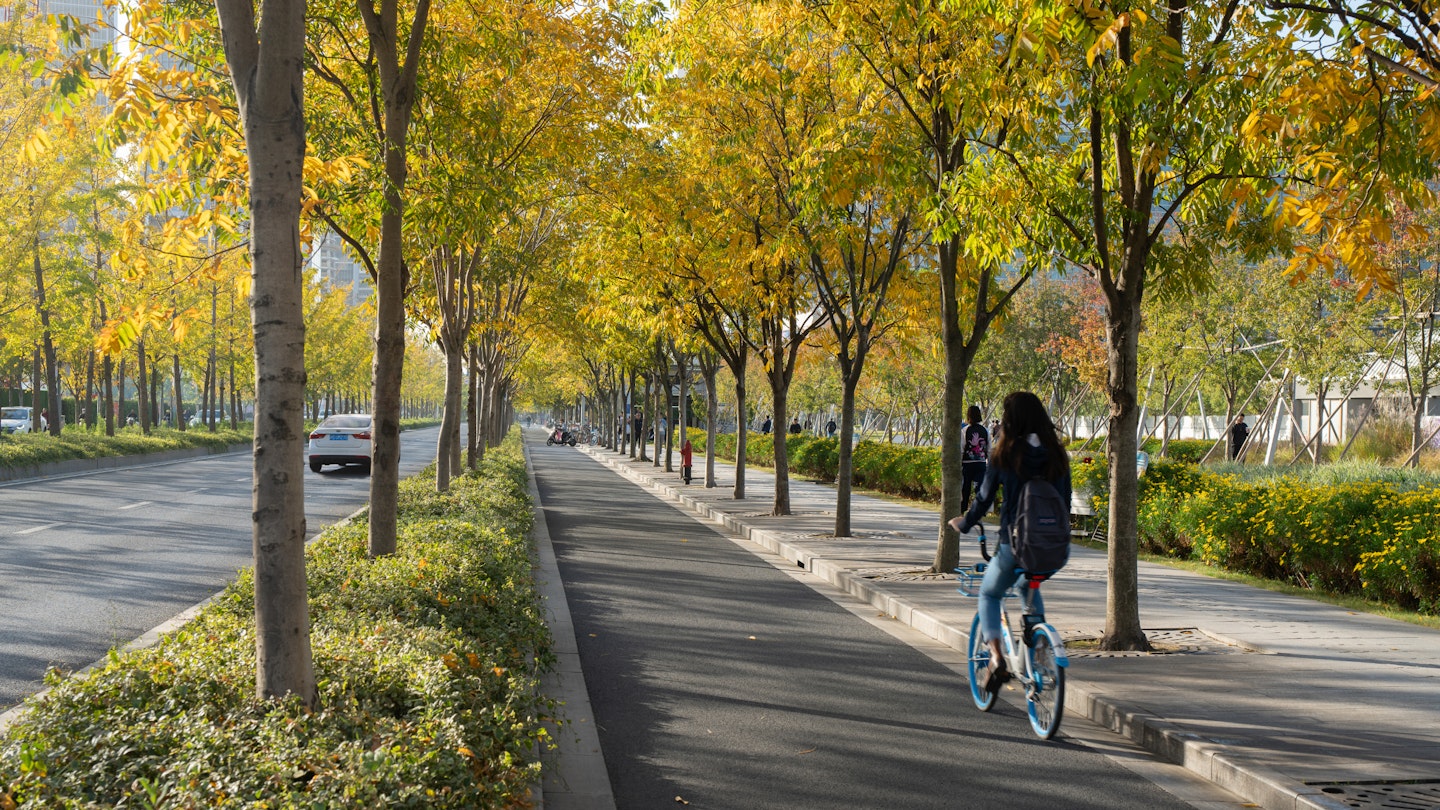Xuhui Runway Park: A Sustainable Urban Oasis in Shanghai
A beautiful new park has been established on the runway of what was Shanghai’s only civilian airport as part of an urban revitalization project. Xuhui Runway Park is a 1830-meter-long park in the Xuhui riverfront area of the city, divided into a series of smaller gardens and planted areas.
Park Overview
The sustainable urban park is situated on the site of Longhua Airport, which operated for over 80 years and closed in 2011. The park stretches almost two kilometers long and features pedestrian walkways, designated bike lanes, and six rows of deciduous trees. The design, created by architecture studio Sasaki, mimics the motion of a runway, incorporating elements like a runway playground and a fountain throughout the space.

Connecting History and Nature
To reflect the site’s previous history, there are diverse linear spaces for vehicles, bicycles, and pedestrians. The ascending and descending movement throughout the park aims to connect visitors to the past, with overlooks for pedestrians and cyclists that evoke the experience of being on an airplane. Additionally, there is a multipurpose lawn with a capacity for holding 3500 people, alongside features such as a birdwatching grove and a Children’s Interactive Fountain.

Aviation-Inspired Features
Multiple water features inspired by the aviation industry include the Runway Fountain and the Silver Wings Fountain. A sunken garden is carved between the park’s subway station and neighboring development, accommodating cultural events and performances for up to 900 people. Various restaurant and public service facilities are scattered throughout the park, designed to facilitate small social gatherings.

Sustainable Design Practices
Portions of the original runway concrete have been integrated into the park design, including in the birdwatching grove, creating intricate resting spaces. The design team selected a row of 3.6-meter-wide structurally-sound runway panels to serve as the main pedestrian path of the park, preserving the original direction markings.
The demolished concrete pieces have been reused in a randomized paving pattern next to the main pedestrian path. According to Sasaki, this approach has not only saved on construction costs but also significantly reduced greenhouse gas emissions from the manufacturing of new concrete.





